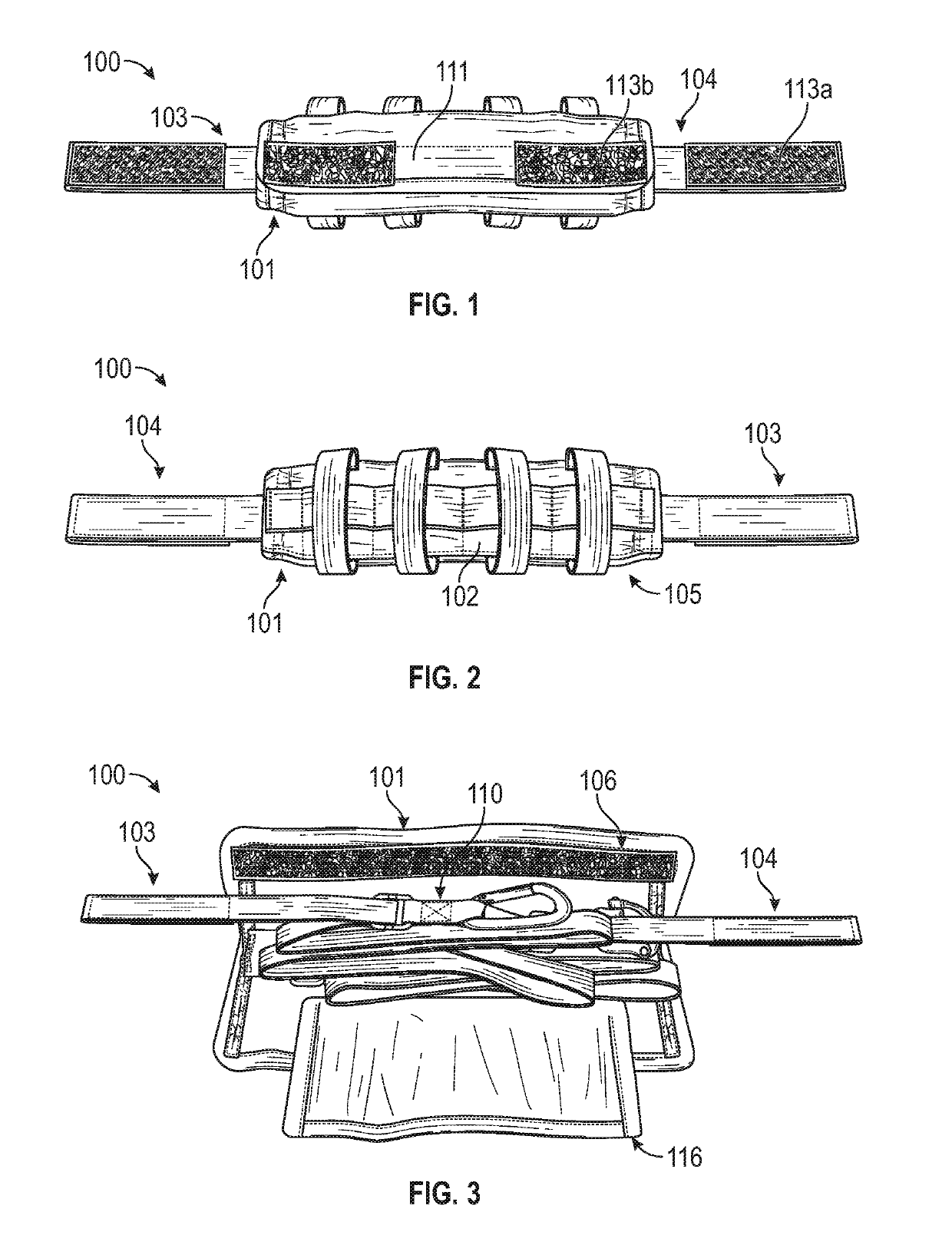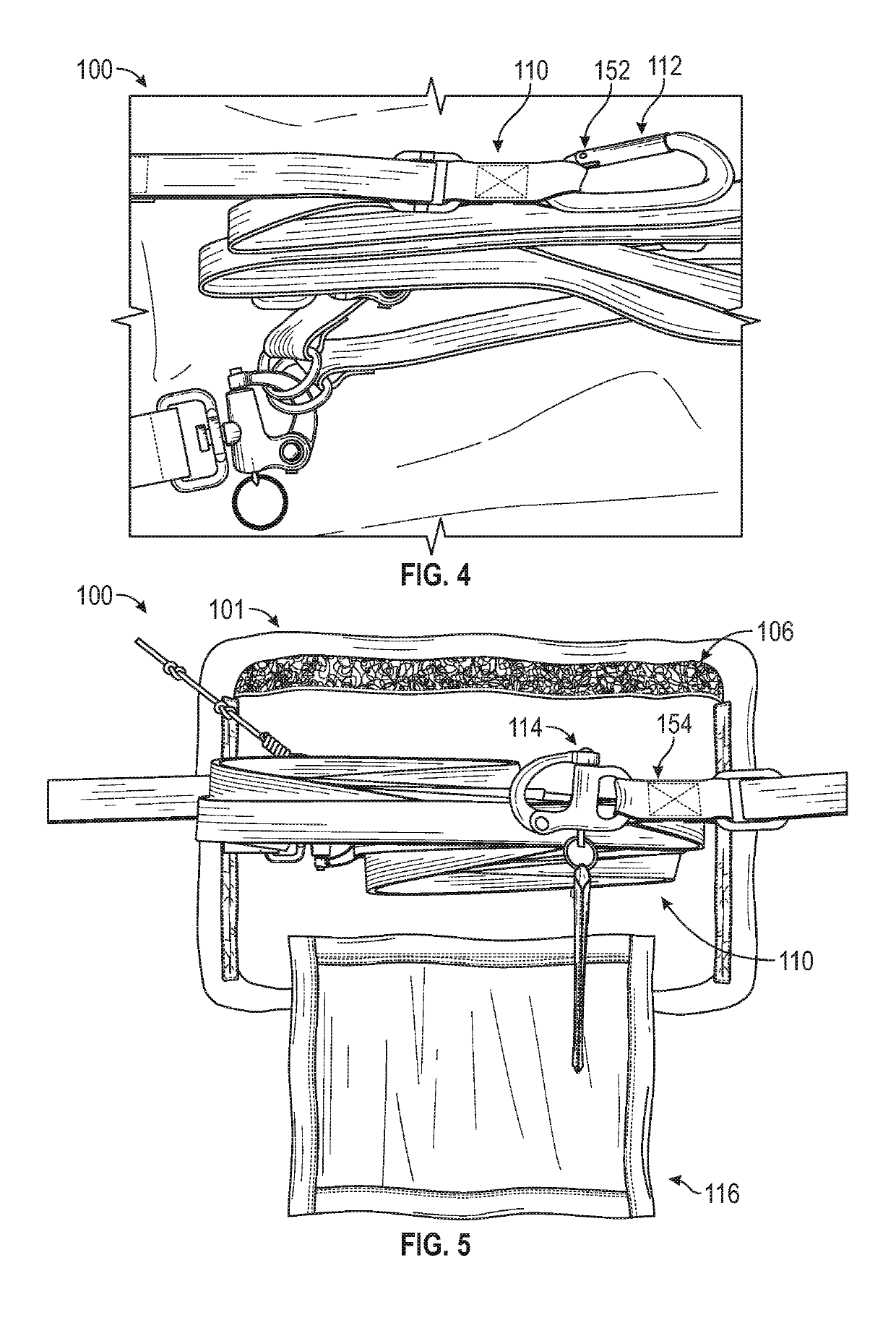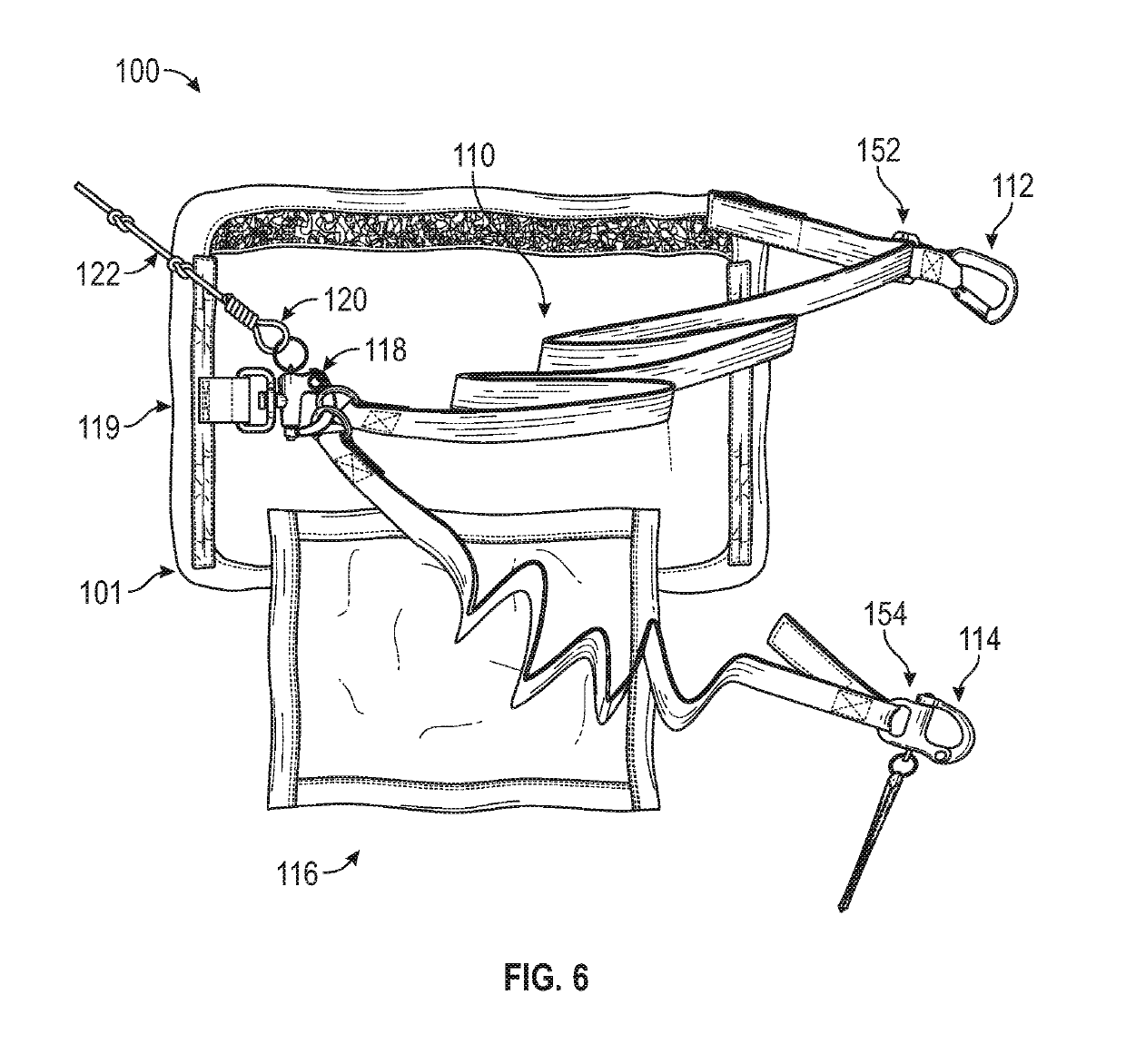Assembly for extrication and rescue
a technology of extrication and rescue, applied in the field of wearable assemblies, can solve the problems of increasing the risk of being injured by an officer, and putting the personnel of any one agency in harm's way, so as to achieve the effect of quick and easy coupling of coupling members
- Summary
- Abstract
- Description
- Claims
- Application Information
AI Technical Summary
Benefits of technology
Problems solved by technology
Method used
Image
Examples
Embodiment Construction
[0036]In general, a tactical extrication and rescue assembly (hereinafter ‘TERA’) is described. As will be apparent from the figures and description that follow, a TERA can be used by law enforcement, military, fire, ambulance or other personnel of similar professions to aid in the extrication of victims from a dangerous environment. In particular, TERAs of the type described herein allow a wearer to rapidly remove a victim from a dangerous environment while keeping the wearer's hands free to hold a weapon for providing cover or returning gunfire (in, e.g., police or military applications), for stability in low- or no-visibility environments (e.g., in firefighting applications) or any other purpose. In particular, a TERA provides the capability of a ‘hands-free’ removal of persons from a variety of dangerous environments, e.g., hostage or active-shooter situations, fires, IDLH (immediately dangerous to life and health) environments and others.
[0037]Referring now to FIGS. 1 and 2, re...
PUM
 Login to View More
Login to View More Abstract
Description
Claims
Application Information
 Login to View More
Login to View More - R&D
- Intellectual Property
- Life Sciences
- Materials
- Tech Scout
- Unparalleled Data Quality
- Higher Quality Content
- 60% Fewer Hallucinations
Browse by: Latest US Patents, China's latest patents, Technical Efficacy Thesaurus, Application Domain, Technology Topic, Popular Technical Reports.
© 2025 PatSnap. All rights reserved.Legal|Privacy policy|Modern Slavery Act Transparency Statement|Sitemap|About US| Contact US: help@patsnap.com



